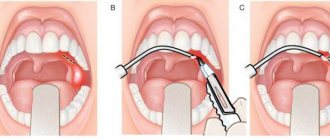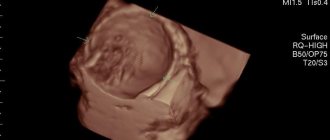Sign up
Price
Our doctors
Bartholin's glands are located in the lower part of the labia majora (one on each side). The task of these glands is to moisturize the vaginal epithelium. They are the ones who produce mucus, which is released during sexual arousal. Bartholinitis is a disease in which inflammation of the Bartholin glands occurs.
Bartholinitis is the most common disease in sexually active women aged 20-30 years. What are the causes and symptoms of inflammation of the Bartholin gland?
TREATMENT OF BARTHOLIN'S GLAND CYST IS AVAILABLE IN THE BRANCHES:
Treatment of Bartholin gland cyst in the Primorsky region
Address: St. Petersburg , Primorsky district, st. Repisheva, 13
Treatment of Bartholin gland cyst in the Petrograd region
Address: St. Petersburg , Petrogradsky district, st. Lenina, 5
Treatment of Bartholin gland cyst in Vsevolozhsk
Address: Vsevolozhsk , Oktyabrsky Prospekt, 96 A
Causes of inflammation of the Bartholin gland
Typically, the cause of bartholinitis is a bacterial infection. Microorganisms enter the gland through the outlet of the gland duct, where they begin to multiply. As a result, inflammation, suppuration, swelling and blockage of the gland ducts occurs. The mucus in the ducts stagnates, which leads to the formation of a Bartholin gland cyst (accumulation of pus).
The most common cause of inflammation of the Bartholin gland is sexually transmitted diseases:
- gonorrhea
- trichomoniasis
- chlamydia
And:
- failure to comply with intimate hygiene rules (infection with staphylococci, streptococci, E. coli)
- development of inflammation due to candidiasis (thrush)
Factors that can stimulate bartholinitis in women include:
- hypothermia
- weakened immune system
- sexual intercourse during menstruation
- abortion and other uterine surgeries
Symptoms of bartholinitis
According to the stage of the disease, bartholinitis can be divided into types:
- spicy
- chronic
- recurrent
At the site of inflammation:
- canaliculitis - inflammation of the excretory duct of the gland
- Bartholin gland cyst
Bartholin's glands are normally the size of a pea. When the Bartholin gland is inflamed (usually occurring on one side), redness, swelling, or swelling is often observed at the base of the labia majora.
A characteristic symptom of bartholinitis is an unpleasant sensation when palpating the inflamed area in the vaginal area, as well as when walking, sitting, changing position, or sexual intercourse. When the inflammation process worsens, suppuration occurs in the gland and body temperature rises to 39 - 40 C, pain in the area of inflammation becomes throbbing, weakness and headache appear. The inguinal lymph glands may also become enlarged.
In the chronic form of bartholinitis, the disease proceeds slowly, without pronounced symptoms. However, during exacerbations, the disease makes itself felt by acute pain in the vagina. As a result of the chronic form of bartholinitis, a Bartholin gland cyst can form.
What does “it” hide?
Inflammation is our body’s “response” to the invasion of foreign microorganisms or a “signal” of cell damage. Many of us know that the inflamed area hurts, swells, turns red, but few people know why this happens. In reality, a complex cascade of reactions is triggered in response to injury, and our blood vessels and protective cells play a key role in the inflammatory response. The inflammatory process can affect any organ: eyes, ears, liver, joints, stomach, and so on. And so, in order not to be confused in terms, it was decided to add the ending “-itis” to the Latin name of the diseased organ (or its part), which means its inflammation. For example, inflammation of the skin is “dermatitis”, inflammation of the ears is “otitis media”, and with an inflammatory process in the bronchi, the doctor diagnoses “bronchitis”. Perhaps, in gynecology, inflammatory processes occur most often, and they can affect both the external and internal genital organs. Such diseases include: vulvitis, vaginitis, adnexitis, endometritis, bartholinitis. Inflammation can be acute or chronic. The first occurs quickly and violently: with pain, a rise in temperature and a general reaction of the body. The second lasts long and tediously: exacerbations alternate with temporary improvements. If acute inflammation is not treated, over time it will become chronic.
Cyst symptoms
Symptoms of a cyst vary in severity depending on its condition:
- in the absence of inflammation - periodic mild pain in the labia majora, discomfort when walking or palpating
- with inflammation of the cyst - pain in the external genital area, aggravated by physical activity, increased body temperature, weakness, severe swelling and redness at the site of cyst formation.
After inflammation, the cyst can spontaneously open with the release of purulent contents, which can positively affect the woman’s overall well-being.
However, it is important to remember that even in this case it is necessary to consult a gynecologist, since if the cyst is arbitrarily opened, complete cleansing of pus does not occur and surgical intervention is necessary. In addition, it is necessary to pay attention that squeezing out suppuration on your own is PROHIBITED, as it can lead to infection entering the blood and causing general infection (sepsis).
The lack of adequate treatment can lead to the formation of a non-healing fistula (unnatural opening), the spread of infection through the vaginal mucosa, and the spread of inflammation to the urethra. Also, when visiting a gynecologist, you can consult on questions that interest you, for example, painful PMS, as well as undergo the prevention of gynecological diseases, such as ectropion of the cervix.
Be careful - strangers are in the body!
Inflammation of the female genital organs is quite easy to suspect. Sudden pain in the lower abdomen, menstrual cycle disorder, itching and strange (in color and smell) vaginal discharge - all this indicates the presence of inflammation. If, in addition, the temperature rises and weakness appears, most likely the inflammatory process is in the acute phase. Pathogenic microorganisms can enter the female genital organs in two ways: through the blood and through the vagina, and the latter route is much shorter than the first. After all, the internal genital organs of a woman are an open system by nature; it communicates with the environment through the vagina and cervix. An inflammatory disease can be caused by sex without a condom, trauma to the genital organs of any origin, failure to comply with personal hygiene rules, abortion and childbirth. When the infection circulates in the blood, for example, with influenza and scarlet fever, it can also reach the female genital organs. A similar situation is observed when somewhere in the body there is already a focus of inflammation: caries, chronic sinusitis, tonsillitis, etc. A dormant infection can “wake up” at any moment, “swim” through the bloodstream to the genitals and “arrange” inflammation. It is impossible to talk about all inflammatory diseases of the female genital organs in one article; we will focus on one of them - bartholinitis.
Treatment of bartholinitis
As in any area of health, self-monitoring and timely consultation with a doctor in the early stages of inflammation are important. In this case, antibacterial therapy and pain relief are used. In the early stages of bartholinitis, “home methods” of treatment can be prescribed, including sitz baths or compresses with chamomile, oak bark, miramistin, chlorhexidine, Vishnevsky ointment and levomikol. Treatment is carried out only after consultation with a doctor and in accordance with his recommendations!!!
But when dealing with the acute stage of inflammation or a Bartholin gland cyst, a more categorical intervention is necessary, which boils down to opening the purulent focus, disinfection and removal of the contents. In this case, it is necessary to maintain bed rest, abstain from sexual relations and prevent hypothermia for a certain period of time.
In some cases, inflammation and suppuration may occur again after surgery. In this case, the extription method is used - removal of the Bartholin gland.
Where to go with bartholinitis?
If acute symptoms of bartholinitis occur, there is little time left to choose the right medical institution that meets all the required parameters.
The full amount of information provided by our Help Desk for private clinics in Moscow “Your Doctor” makes it possible to easily decide on the choice of an institution in the nearby area and a gynecologist of the appropriate level of qualifications, as well as make an appointment at a convenient time for visiting.
Publication date: 2018-06-01
Bartholinitis and pregnancy
Infections that a woman is infected with and that cause bartholinitis can negatively affect the course of pregnancy and the development of the child. Infected mother's blood, entering the child's body through the placenta, can lead to disturbances in the formation of the baby's organs. In the early stages of pregnancy, infection can cause fetal death.
Do not delay visiting your doctor if you have symptoms of inflammation of the Bartholin gland. You can diagnose bartholinitis in our clinic, and also receive qualified help, advice and recommendations by making an appointment with a gynecologist by phone. or the feedback form at the bottom of the page.
Watch yourself, appreciate yourself and be healthy!
Prevention
Prevention of bartholinitis is carried out in two main areas: hygiene and strengthening the immune system. First of all, you should strictly adhere to existing recommendations for maintaining personal hygiene, regularly shower, use contraception during sexual intercourse, and make preventive visits to the gynecologist. This will allow you to timely detect an infection that can provoke bartholinitis and undergo the necessary course of treatment. To strengthen your immune system, you should eat well, avoid stress and a sedentary lifestyle. It is recommended to exercise, give up bad habits, and take prophylactic multivitamins in the spring and fall.
Cost of treatment for Bartholin gland cyst:
| Services list | Price in rubles | |
| Saint Petersburg | Vsevolozhsk | |
| Initial appointment with a 1st stage obstetrician-gynecologist | 1850 | 1500 |
| Repeated appointment with a 1st stage obstetrician-gynecologist | 1650 | 1300 |
| Primary appointment with an obstetrician-gynecologist, stage 2 | 2100 | — |
| Repeated appointment with an obstetrician-gynecologist, stage 2 | 1900 | — |
| MANIPULATION | ||
| Insertion of obstetric pessary | 1500 | 1500 |
| Insertion of an intrauterine device (IUD) | 2500 | 2500 |
| Insertion of the Mirena intrauterine device | 4000 | 4000 |
| Introduction of the implantable contraceptive IMPLANON (without the cost of the contraceptive) | 2500 | 2100 |
| Videocolposcopy | 1700 | 1700 |
| Smear collection (gynecological) | 400 | 400 |
| Instrumental removal of the intrauterine device (IUD) | 2500 | 2100 |
| Intravaginal administration of suppositories (without the cost of medications), 1 procedure | 500 | 500 |
| Therapeutic treatment of the vagina | 700 | 700 |
| Medical termination of pregnancy | 8000 | — |
| Local treatment of the external genitalia | 700 | 700 |
| Removing the obstetric pessary | 1000 | 1000 |
| Removing the intrauterine device (IUD) | 1500 | 1500 |
| Removal of the Mirena intrauterine device | 3000 | 3000 |
| Removal of the implantable contraceptive IMPLANON | 2500 | 2300 |
| Removing a foreign body from the vagina | 1800 | 1800 |
| Line biopsy of the endometrium (pipe diagnostics) | 1500 | 1200 |
| PRP therapy | — | 3500 |
| ULTRASONIC AND FUNCTIONAL DIAGNOSTICS | ||
| Ultrasound of the pelvic organs (one sensor) | 1600 | 1300 |
| Ultrasound of the pelvic organs (two sensors) | 1900 | 1500 |
| CTG (fetal cardiotocography) | 1800 | — |
| CTG (multiple pregnancy) | 2300 | — |
| LASER SURGERY | ||
| Cervical biopsy + histology | 5000 | 4000 |
| Single cervical cyst | 1500 | 1500 |
| Single papillomas and condylomas of the vaginal walls | 3000 | 3000 |
| Common condylomatosis, papillomatosis | from 6000 | from 6000 |
| Removal of single condylomas, papillomas of the vulva, cervix (for 1 unit) | 600 | 600 |
| Ectopia (erosion) of the cervix (less than 2 cm) | 6000 | 4000 |
| Ectopia (erosion) of the cervix (more than 2 cm) | 9000 | 9000 |
| Endometriosis of the cervix (single lesion) | 1000 | 1000 |
| RADIOSURGERY | ||
| Biopsy of the cervix with a radioknife | 2500 | 2000 |
| Treatment of leukoplakia and vulvar kraurosis using a radiosurgical knife | 5300 | 5100 |
| Treatment of cervical pathology with a radiosurgical knife up to 1 cm | 5000 | 3700 |
| Treatment of cervical pathology using a radiosurgical knife up to 2 cm | 6500 | 6000 |
| Removal of cervical polyps using a radiosurgical knife | 4000 | 2500 |
| Fulguration of cysts, endometrioid lesions using a radiosurgical knife | 3500 | 2200 |
| Electrocoagulation of condylomas on the skin in the perineal area with a radio knife (for 1 unit) | 800 | 800 |
| Electrocoagulation of condylomas, papillomas of the vulva with a radio knife | 1400 | 1400 |
| Electrocoagulation of condylomas, vaginal papillomas with a radio knife | from 3200 | from 3200 |
| OPERATIONS | ||
| Intimate contouring | — | 26000 |
| Surgical defloration | 8000 | 8000 |






